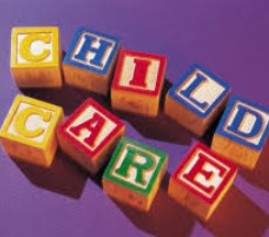
ABC’s The 7.30 Report ran an interesting segment last night on the growing cost of childcare, which is reportedly crimping labour force participation amongst women:
More than a quarter of a million Australians who say they’d like to be in paid work are choosing to stay at home and look after their children. Most of them, unsurprisingly, are women. They nominate the cost of childcare and the lack of availability as the reasons why they drop out of the paid workforce. There are calls to simplify government childcare payments now, make the sector more accountable for the money it receives and allow families the option to claim nannies as a tax deduction…
Parents, employers, workers and childcare groups all agree: Australia’s childcare system is broken and in need of an overhaul…
Alex Wells: There is no affordable childcare. I’ve yet to see anything vaguely in the realms of stuff – something that we can afford long-term. … We’re looking at $80 a day for my youngest – he’s four – so there’s $400 a week, so $800 a fortnight. We’re looking at $15 for my other two, per hour, for after-school care, until, say, 6 o’clock in the afternoon, which is another $450 a week. Who can afford that? Really? I mean, nobody – well, people do make that much money, but even if I went out to work, I would be paying all of it to the childcare. May as well stay home…
Recent figures from the Bureau of Statistics show more than a quarter of a million parents like Alex Wells have chosen to stay at home to care for their children. Around a third of that group say they want to be the main care-giver, and another quarter say it’s too hard to find a centre with available places that’s close to home and is open at the right times…
Fundamentally, the subsidies do cover a little over 50 per cent of the cost for most families, which is a significant help, but it’s almost impossible for families to work out exactly what they’re entitled to before they actually have a child at a centre…
Early Childhood Australia, a peak not-for-profit organisation, wants the payments streamlined into one.
Late last year, the Productivity Commission released new research on childcare in Australia, which it estimated that it costs families on average around 9% of their disposable income, despite $5.2 billion of annual subsidies from the federal government. It also noted that childcare subsidies have grown from $1.5 billion a year in the early 2000s to an estimated $5.2 billion this financial year, with fees rising by around 7% annually in the decade to 2011-12.
Certainly, for many mothers, having children is detrimental to their careers – either because the cost of childcare makes working unattractive, or because they can only work part-time. To the extent that reforms to childcare arrangements can ease this burden, provide mothers with greater choice, and boost workforce participation, then they should be examined.
One obvious policy solution is to abandon Tony Abbott’s $5.5 billion per year paid parental leave (PPL) scheme, and channel some of this funding into childcare. As argued beautifully by The Guardian’s Greg Jericho last month, the PPL Scheme will likely “fail to achieve any significant lift in women’s participation in the workforce”, while at the same time necessitating cuts to spending on childcare, “which is much more likely to achieve this aim”:
That said, Australian families also need to be realistic. Having children is a personal choice and no family should expect to have all of their childcare costs subsidised by other taxpayers. Existing arrangements are already quite generous, albeit there is some scope for improvement and improved flexibility.
And while some mothers wish to return to full-time work, but cannot do so due to exorbitant childcare costs, many other families would prefer not to have both mum and dad working. However, because it is so difficult to raise a family on a single income these days, in no small part due to the inflated cost of housing in Australia, they are forced to return to work earlier than they’d like, reluctantly sending their children to Childcare. For this group, “childcare stress” is more a symptom of an increased cost of living from housing, rather than the cost of childcare per se.
As an aside, given that childcare is a cost borne by most dual income families, averaging 9% of disposable income, isn’t it about time that housing affordability measures, like price-to-income ratios, include such costs? With childcare costs deducted from disposable income, Australia’s housing would appear even less affordable than it already is.

